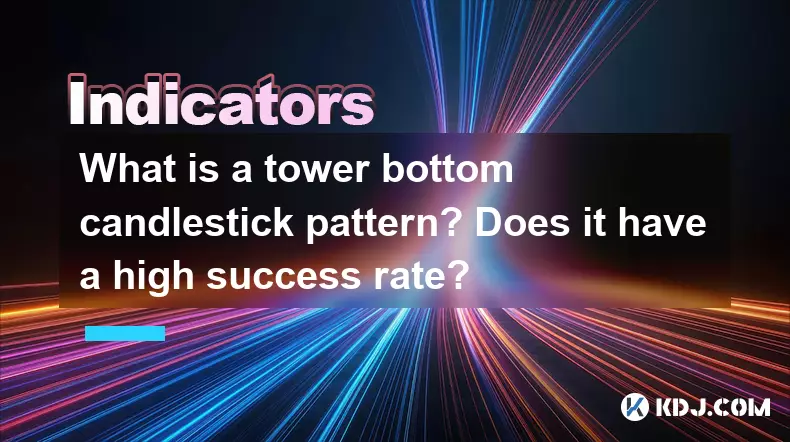-
 bitcoin
bitcoin $112195.049338 USD
2.42% -
 ethereum
ethereum $4124.915858 USD
2.81% -
 tether
tether $1.000570 USD
0.02% -
 xrp
xrp $2.861568 USD
2.25% -
 bnb
bnb $1000.346670 USD
3.04% -
 solana
solana $209.070819 USD
3.38% -
 usd-coin
usd-coin $0.999870 USD
0.02% -
 dogecoin
dogecoin $0.235379 USD
2.65% -
 tron
tron $0.335681 USD
-0.20% -
 cardano
cardano $0.803501 USD
3.38% -
 hyperliquid
hyperliquid $47.120881 USD
3.56% -
 chainlink
chainlink $21.501300 USD
3.44% -
 ethena-usde
ethena-usde $1.000571 USD
0.02% -
 avalanche
avalanche $29.793378 USD
3.62% -
 stellar
stellar $0.366964 USD
2.42%
What to do if SAR has many false signals in the minute K-line? How to optimize short-term SAR?
SAR on minute K-lines can produce many false signals; use longer time frames, other indicators, and a buffer zone to mitigate these and optimize for short-term trading.
May 27, 2025 at 04:50 pm

In the realm of cryptocurrency trading, the Parabolic Stop and Reverse (SAR) indicator is a popular tool used by traders to determine potential reversals in price trends. However, when applied to minute K-line charts, SAR can often produce many false signals, leading to confusion and potential losses. This article will explore strategies to handle false signals from SAR on minute K-lines and how to optimize SAR for short-term trading.
Understanding SAR and Its Application on Minute K-Lines
SAR, or Parabolic SAR, is an indicator used to identify potential reversals in the price direction of an asset. It appears on a chart as a series of dots, placed either above or below the price, depending on the current trend. When the dots are below the price, it indicates an uptrend, suggesting that traders should consider buying. Conversely, when the dots are above the price, it signals a downtrend, suggesting that traders might want to sell or short.
On minute K-line charts, which are typically used for short-term trading, SAR can become particularly volatile. The rapid price movements can cause the SAR dots to flip frequently, resulting in numerous false signals. These false signals can lead traders to enter and exit positions prematurely, incurring unnecessary transaction costs and potential losses.
Identifying False Signals in SAR on Minute K-Lines
To effectively manage false signals from SAR on minute K-lines, it's crucial to first identify them. False signals are often characterized by the following traits:
- Short-lived reversals: The price briefly touches the SAR dot and then reverses back to its original direction.
- Frequent flips: The SAR dots change positions (from above to below the price or vice versa) multiple times within a short period.
- Lack of confirmation: Other technical indicators do not confirm the reversal suggested by the SAR.
By closely monitoring these traits, traders can differentiate between genuine trend reversals and false signals.
Strategies to Handle False Signals in SAR on Minute K-Lines
To mitigate the impact of false signals, traders can employ several strategies:
- Use longer time frames for confirmation: While trading on minute K-lines, consider checking higher time frames (like 5-minute or 15-minute charts) to confirm the signals provided by the SAR on the minute chart. If the higher time frame supports the signal, it is more likely to be valid.
- Combine SAR with other indicators: Utilizing other technical indicators, such as Moving Averages, RSI, or MACD, can help confirm or refute the signals given by SAR. For instance, if SAR indicates a reversal, but the RSI does not show overbought or oversold conditions, the signal might be false.
- Set a buffer zone: Instead of entering trades immediately when the price touches the SAR dot, set a small buffer zone. Only enter a trade if the price moves beyond this buffer zone, reducing the likelihood of acting on a false signal.
Optimizing SAR for Short-Term Trading
To optimize SAR for short-term trading on minute K-lines, consider the following adjustments:
- Adjust the acceleration factor: The default acceleration factor for SAR is usually set at 0.02. For short-term trading, you might want to experiment with a lower acceleration factor to reduce the sensitivity of the indicator. A lower factor can help smooth out the SAR dots and reduce false signals.
- Modify the maximum acceleration: The maximum acceleration is typically set at 0.2. Adjusting this to a lower value can also help in reducing the frequency of SAR flips on minute K-lines.
- Backtesting: Before applying any changes to your live trading, backtest different settings for the acceleration factor and maximum acceleration on historical data. This will help you find the optimal settings that minimize false signals while still capturing genuine trend reversals.
Implementing SAR Optimization in Trading Platforms
To implement these optimizations, follow these steps:
- Select a trading platform: Ensure your trading platform supports custom indicators and backtesting. Popular platforms like TradingView or MetaTrader 4/5 are suitable for this purpose.
- Access the SAR settings: Navigate to the indicator settings for SAR. This is usually done by clicking on the SAR indicator on your chart and selecting 'Settings' or 'Properties.'
- Adjust the acceleration factor: In the settings, locate the acceleration factor and change it to a lower value, such as 0.01 or 0.015. Experiment with different values to find what works best for your trading strategy.
- Modify the maximum acceleration: Similarly, find the maximum acceleration setting and adjust it to a lower value, such as 0.1 or 0.15. Again, test different values to optimize for your specific needs.
- Backtest the changes: Use the backtesting feature of your platform to apply these new settings to historical data. Analyze the results to see if the changes have reduced false signals and improved overall performance.
- Apply the optimized settings to live trading: Once satisfied with the backtesting results, apply the optimized SAR settings to your live trading charts.
Monitoring and Adjusting SAR in Real-Time
Even after optimizing SAR for short-term trading, it's important to continuously monitor its performance and make adjustments as needed. Here are some tips for real-time monitoring:
- Regularly review trades: Keep a trading journal to record all trades, including the signals provided by SAR. Review this journal periodically to identify any patterns in false signals and adjust your strategy accordingly.
- Stay updated with market conditions: Market volatility can affect the performance of SAR. During periods of high volatility, you might need to further adjust the acceleration factor or maximum acceleration to maintain accuracy.
- Use alerts: Set up alerts on your trading platform to notify you when the price approaches the SAR dots. This allows you to quickly assess whether the signal is valid or a false one.
Frequently Asked Questions
Q: Can SAR be used effectively on other time frames besides minute K-lines?A: Yes, SAR can be used effectively on various time frames, including hourly, daily, and weekly charts. The key is to adjust the acceleration factor and maximum acceleration according to the time frame. Generally, longer time frames can use higher acceleration factors without generating as many false signals as minute K-lines.
Q: Is it possible to automate the process of adjusting SAR settings based on market conditions?A: Yes, some advanced trading platforms and custom scripts allow for the automation of indicator settings based on predefined conditions. However, this requires a deep understanding of programming and the specific platform's capabilities. Always test automated systems thoroughly before using them in live trading.
Q: How does the choice of cryptocurrency affect the performance of SAR on minute K-lines?A: The choice of cryptocurrency can significantly impact SAR's performance due to differing levels of volatility and liquidity. Highly volatile cryptocurrencies may produce more false signals on minute K-lines, necessitating more careful optimization of SAR settings. Conversely, less volatile assets might require less frequent adjustments.
Q: Are there any specific cryptocurrencies that work better with SAR on minute K-lines?A: While SAR can be applied to any cryptocurrency, it tends to work better with assets that have higher liquidity and less extreme volatility. Cryptocurrencies like Bitcoin and Ethereum, which have deep liquidity and relatively stable trading volumes, might provide more reliable signals compared to smaller altcoins with erratic price movements.
Disclaimer:info@kdj.com
The information provided is not trading advice. kdj.com does not assume any responsibility for any investments made based on the information provided in this article. Cryptocurrencies are highly volatile and it is highly recommended that you invest with caution after thorough research!
If you believe that the content used on this website infringes your copyright, please contact us immediately (info@kdj.com) and we will delete it promptly.
- Ethereum's Price Dance: Will Crypto Rallies Keep the Music Playing?
- 2025-09-29 08:25:12
- Crypto Staking Spotlight: BlockDAG's Referral Revolution Outshines Avalanche & Meme Coin Hype
- 2025-09-29 08:45:16
- BlockDAG, SUI, Chainlink: Navigating the Crypto Landscape in 2025
- 2025-09-29 08:25:12
- XRP Price Gears Up: Breakout Signals and What to Watch
- 2025-09-29 08:30:01
- Bitcoin, Gold, and Digital Assets: Navigating the New Financial Frontier
- 2025-09-29 08:45:16
- Naver & Dunamu: A Powerhouse Partnership Forged in Crypto?
- 2025-09-29 09:05:16
Related knowledge

What is a tower bottom candlestick pattern? Does it have a high success rate?
Sep 22,2025 at 07:18am
Tower Bottom Candlestick Pattern Explained1. The tower bottom candlestick pattern is a reversal formation that typically appears at the end of a downt...

What is a black hole pattern in the MACD indicator? Is it a cause for concern?
Sep 21,2025 at 06:54pm
Bitcoin's Role in Decentralized Finance1. Bitcoin remains the cornerstone of decentralized finance, serving as a benchmark for value and security acro...

How can I use the psychological line (PSY) to determine market sentiment?
Sep 17,2025 at 02:19pm
Understanding the Psychological Line (PSY) in Cryptocurrency TradingThe Psychological Line, commonly referred to as PSY, is a momentum oscillator used...

How can I determine if a double top pattern has officially formed?
Sep 21,2025 at 03:18am
Understanding the Structure of a Double Top Pattern1. A double top pattern consists of two distinct peaks that reach approximately the same price leve...

What is the Golden Valley pattern on the moving average? Is it better than the Silver Valley pattern?
Sep 21,2025 at 02:54pm
Understanding the Golden Valley Pattern in Moving Averages1. The Golden Valley pattern is a technical formation observed in cryptocurrency price chart...

What does a death cross of the RSI in the strong zone (above 50) mean?
Sep 17,2025 at 10:54pm
Understanding the Death Cross in RSI Context1. The term 'death cross' is traditionally associated with moving averages, where a short-term average cro...

What is a tower bottom candlestick pattern? Does it have a high success rate?
Sep 22,2025 at 07:18am
Tower Bottom Candlestick Pattern Explained1. The tower bottom candlestick pattern is a reversal formation that typically appears at the end of a downt...

What is a black hole pattern in the MACD indicator? Is it a cause for concern?
Sep 21,2025 at 06:54pm
Bitcoin's Role in Decentralized Finance1. Bitcoin remains the cornerstone of decentralized finance, serving as a benchmark for value and security acro...

How can I use the psychological line (PSY) to determine market sentiment?
Sep 17,2025 at 02:19pm
Understanding the Psychological Line (PSY) in Cryptocurrency TradingThe Psychological Line, commonly referred to as PSY, is a momentum oscillator used...

How can I determine if a double top pattern has officially formed?
Sep 21,2025 at 03:18am
Understanding the Structure of a Double Top Pattern1. A double top pattern consists of two distinct peaks that reach approximately the same price leve...

What is the Golden Valley pattern on the moving average? Is it better than the Silver Valley pattern?
Sep 21,2025 at 02:54pm
Understanding the Golden Valley Pattern in Moving Averages1. The Golden Valley pattern is a technical formation observed in cryptocurrency price chart...

What does a death cross of the RSI in the strong zone (above 50) mean?
Sep 17,2025 at 10:54pm
Understanding the Death Cross in RSI Context1. The term 'death cross' is traditionally associated with moving averages, where a short-term average cro...
See all articles










































































